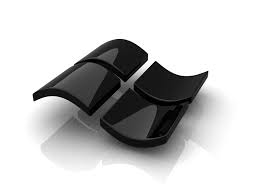Source(Google.com.pk)
Backgrounds For Computer Biography
Biocomputers
From Wikipedia, the free encyclopedia
This article has multiple issues. Please help improve it or discuss these issues on the talk page.
This article appears to be written like an advertisement. (June 2011)
The neutrality of this article is disputed. (June 2011)
This article includes inline citations, but they are not properly formatted. (August 2012)
Biocomputers use systems of biologically derived molecules, such as DNA and proteins, to perform computational calculations involving storing, retrieving, and processing data.
The development of biocomputers has been made possible by the expanding new science of nanobiotechnology. The term nanobiotechnology can be defined in multiple ways; in a more general sense, nanobiotechnology can be defined as any type of technology that uses both nano-scale materials, i.e. materials having characteristic dimensions of 1-100 nanometers, as well as biologically based materials (34).4 A more restrictive definition views nanobiotechnology more specifically as the design and engineering of proteins that can then be assembled into larger, functional structures (116-117) (9).³,1 The implementation of nanobiotechnology, as defined in this narrower sense, provides scientists with the ability to engineer biomolecular systems specifically so that they interact in a fashion that can ultimately result in the computational functionality of a computer.
Contents [hide]
1 Scientific background
1.1 Biochemical computers
1.2 Biomechanical computers
1.3 Bioelectronic computers
2 Engineering biocomputers
3 Economics
4 Notable advancements in biocomputer technology
5 Future potential of biocomputers
6 See also
7 References
[edit]Scientific background
Biocomputers use biologically derived materials to perform computational functions. A biocomputer consists of a pathway or series of metabolic pathways involving biological materials that are engineered to behave in a certain manner based upon the conditions (input) of the system. The resulting pathway of reactions that takes place constitutes an output, which is based on the engineering design of the biocomputer and can be interpreted as a form of computational analysis. Three distinguishable types of biocomputers include biochemical computers, biomechanical computers, and bioelectronic computers (349-351).²
[edit]Biochemical computers
Biochemical computers use the immense variety of feedback loops that are characteristic of biological chemical reactions in order to achieve computational functionality. Feedback loops in biological systems take many forms, and many different factors can provide both positive and negative feedback to a particular biochemical process, causing either an increase in chemical output or a decrease in chemical output, respectively. Such factors may include the quantity of catalytic enzymes present, the amount of reactants present, the amount of products present, and the presence of molecules that bind to and thus alter the chemical reactivity of any of the aforementioned factors. Given the nature of these biochemical systems to be regulated through many different mechanisms, one can engineer a chemical pathway comprising a set of molecular components that react to produce one particular product under one set of specific chemical conditions and another particular product under another set of conditions. The presence of the particular product that results from the pathway can serve as a signal, which can be interpreted, along with other chemical signals, as a computational output based upon the starting chemical conditions of the system, i.e. the input.










Backgrounds For Computer Biography
Biocomputers
From Wikipedia, the free encyclopedia
This article has multiple issues. Please help improve it or discuss these issues on the talk page.
This article appears to be written like an advertisement. (June 2011)
The neutrality of this article is disputed. (June 2011)
This article includes inline citations, but they are not properly formatted. (August 2012)
Biocomputers use systems of biologically derived molecules, such as DNA and proteins, to perform computational calculations involving storing, retrieving, and processing data.
The development of biocomputers has been made possible by the expanding new science of nanobiotechnology. The term nanobiotechnology can be defined in multiple ways; in a more general sense, nanobiotechnology can be defined as any type of technology that uses both nano-scale materials, i.e. materials having characteristic dimensions of 1-100 nanometers, as well as biologically based materials (34).4 A more restrictive definition views nanobiotechnology more specifically as the design and engineering of proteins that can then be assembled into larger, functional structures (116-117) (9).³,1 The implementation of nanobiotechnology, as defined in this narrower sense, provides scientists with the ability to engineer biomolecular systems specifically so that they interact in a fashion that can ultimately result in the computational functionality of a computer.
Contents [hide]
1 Scientific background
1.1 Biochemical computers
1.2 Biomechanical computers
1.3 Bioelectronic computers
2 Engineering biocomputers
3 Economics
4 Notable advancements in biocomputer technology
5 Future potential of biocomputers
6 See also
7 References
[edit]Scientific background
Biocomputers use biologically derived materials to perform computational functions. A biocomputer consists of a pathway or series of metabolic pathways involving biological materials that are engineered to behave in a certain manner based upon the conditions (input) of the system. The resulting pathway of reactions that takes place constitutes an output, which is based on the engineering design of the biocomputer and can be interpreted as a form of computational analysis. Three distinguishable types of biocomputers include biochemical computers, biomechanical computers, and bioelectronic computers (349-351).²
[edit]Biochemical computers
Biochemical computers use the immense variety of feedback loops that are characteristic of biological chemical reactions in order to achieve computational functionality. Feedback loops in biological systems take many forms, and many different factors can provide both positive and negative feedback to a particular biochemical process, causing either an increase in chemical output or a decrease in chemical output, respectively. Such factors may include the quantity of catalytic enzymes present, the amount of reactants present, the amount of products present, and the presence of molecules that bind to and thus alter the chemical reactivity of any of the aforementioned factors. Given the nature of these biochemical systems to be regulated through many different mechanisms, one can engineer a chemical pathway comprising a set of molecular components that react to produce one particular product under one set of specific chemical conditions and another particular product under another set of conditions. The presence of the particular product that results from the pathway can serve as a signal, which can be interpreted, along with other chemical signals, as a computational output based upon the starting chemical conditions of the system, i.e. the input.
Backgrounds For Computers

Backgrounds For Computers
Backgrounds For Computers
Backgrounds For Computers
Backgrounds For Computers
BackgroundsFor Computers
Backgrounds For Computers
Backgrounds For Computers
Backgrounds For Computers
Backgrounds For Computers
Backgrounds For Computers
No comments:
Post a Comment